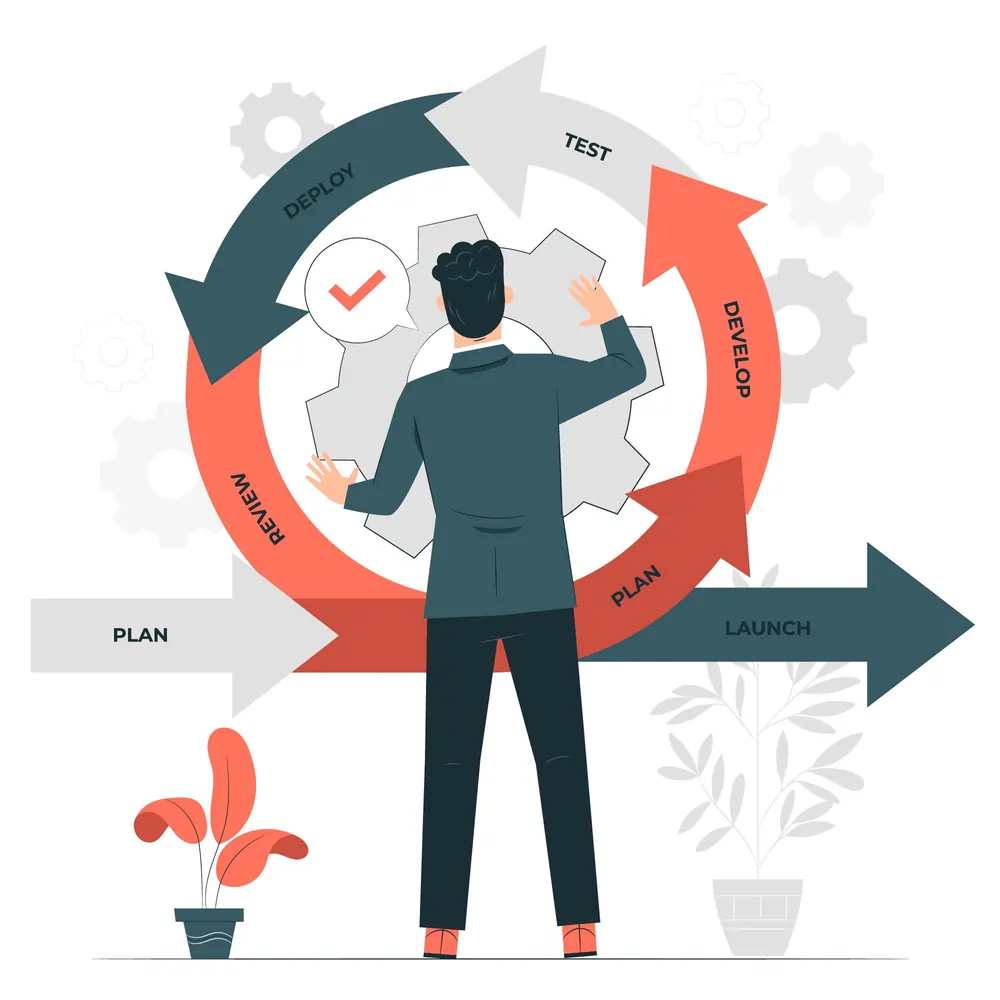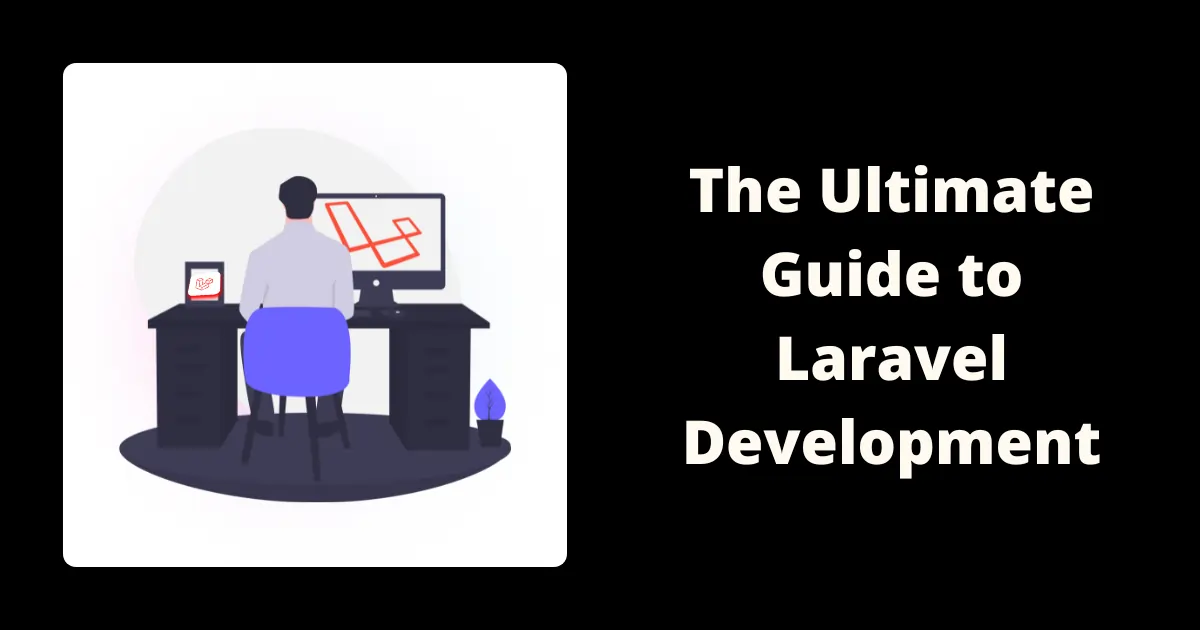Top 11 Web Development Frameworks to Use in 2025

Overview
Table of Contents
- Introduction
- What Makes a Web Development Framework Great
- Key Factors to Consider When Choosing a Web Development Framework
- Frontend Frameworks
- Backend Frameworks
- Full-Stack Framework
- How to Select the Best Web Framework for Your Business
- Emerging Trends Shaping Web Development Frameworks
- Build Future-Ready Applications with JBCodeApp
- Conclusion
- Frequently Asked Questions (FAQs)
Introduction
In today’s digital-first world, choosing the right web development framework can make or break your product's success. From improving development speed to ensuring scalability and performance, the framework you select plays a critical role. With the web constantly evolving, developers are looking for tools that align with modern business needs—whether you're writing backend developer code or designing smooth frontend user experiences.
At JBCodeApp, our frontend experts work with a range of technologies like React, Vue, Angular, Svelte, and Next.js to build intuitive digital experiences. Whether you're a senior frontend developer exploring the best fit for your next app or a company building enterprise software, it's important to assess the pros and cons of each option. Some frameworks like React offer flexible component-based architectures and pair well with tools like React memoize and React Router useNavigate, while others like Angular provide all-in-one solutions for large-scale enterprise apps. In this section, we’ll explore the most reliable and efficient frontend frameworks to use in 2025 based on real-world trends, developer feedback, and future-readiness.
What Makes a Web Development Framework Great
Choosing a great web development framework isn’t just about popularity—it’s about performance, scalability, developer experience, and future growth. A powerful framework provides robust architecture, built-in tools for routing, testing, and authentication, and supports modern development practices like CI/CD and real-time data flow.
Whether you're building single-page apps or enterprise-grade platforms, the right framework sets the foundation for speed, security, and seamless user experience.
Key Characteristics of a Great Framework
- Developer-friendly syntax and documentation
- High scalability and flexibility
- Strong community support and updates
- Security features and testing tools built-in
- Compatibility with frontend-backend-database architectures
Key Factors to Consider When Choosing a Web Development Framework
When selecting the best framework for your project, it’s important to align technical capabilities with your business goals. Not every project requires a full-stack solution or an enterprise-grade framework. Some require rapid MVP delivery, while others need robust API handling or SEO optimization.
Evaluating project size, team skills, time-to-market, and third-party integration needs is critical to making the right choice.
Top Considerations
- Project requirements (e.g., MVP, SaaS, enterprise system)
- Language preference (Python, PHP, JavaScript, C#)
- Performance under load and real-time capabilities
- Integration with other tools and platforms
- Long-term maintainability and scalability
Frontend Frameworks

Frontend frameworks are essential for crafting engaging, responsive user interfaces. Here are the most popular ones in 2025:
React.js
React.js, developed by Meta, continues to dominate the frontend landscape with its component-based architecture. It allows developers to create reusable UI components and manage application states efficiently. React’s flexibility and rich ecosystem make it a top choice for building high-performance applications.
- Built-in support for React memoize
- Compatible with React Router useNavigate
- Compatible with TSX TypeScript for type safety
React 19 brings new capabilities like server components, concurrent rendering, and a React Compiler that optimizes performance automatically. No wonder it remains the preferred tool for any senior frontend developer or growing reactjs development company.
With the introduction of React 19, the framework has taken a leap forward with features like:
- Server Components – enabling server-side rendering at a more granular level
- Concurrent Rendering – allowing smoother and faster user experiences
- React Compiler – automatically optimizing components for improved runtime performance
Key Aspects:
- Mature Ecosystem: React boasts one of the largest developer communities, with a vast collection of third-party libraries and tools. This maturity ensures long-term support and access to a deep pool of knowledge and solutions.
- Performance Optimization: With tools like the React Compiler and concurrent features, apps built with React in 2025 are more responsive and efficient than ever.
- Cross-Platform Flexibility: React’s ecosystem includes frameworks like React Native and Next.js, empowering teams to create web, mobile, and hybrid apps using the same skill set.
- Backed by Industry Giants: Maintained by Meta and adopted by major companies like Netflix, Airbnb, and Instagram, React's continued backing ensures its roadmap remains aligned with real-world development needs.
- Developer Productivity: With features like hot reloading, robust dev tools, and TypeScript support, React offers a frictionless development experience, boosting productivity in both startups and large teams.
Vue.js
Vue is a progressive framework that offers simplicity and flexibility, especially for small to mid-sized applications. It integrates easily with existing projects and supports advanced features like virtual DOM, reactivity, and CLI tools for rapid development.
Vue’s learning curve is gentle, making it ideal for teams who want to ship features fast. Its ecosystem includes Vue Router, Vuex, and Vite for lightning-fast builds.
Key Features:
- Lightweight & Fast: Vue apps remain lean and fast thanks to optimized rendering, a virtual DOM, and support for tree-shaking during bundling.
- Reactivity System: Vue's reactivity system in Vue 3 is one of the most intuitive on the market, enabling seamless state management and real-time UI updates.
- Single File Components (SFCs): Developers can encapsulate HTML, JavaScript, and CSS in a single
.vuefile, streamlining project structure and development workflow. - CLI & Tooling: Vue CLI and the modern build tool Vite (created by the Vue team) enable rapid project scaffolding, instant hot module replacement (HMR), and lightning-fast builds.
- Ecosystem: Core libraries like
Vue RouterandPinia(replacing Vuex) provide routing and state management with a smaller footprint and improved DX. - Strong Community & Documentation: Vue has a robust community and well-maintained official docs, making onboarding and troubleshooting much smoother.
Why It’s Still Relevant in 2025
Vue.js has remained highly relevant in 2025 due to several factors:
- Ongoing Core Updates: The Vue team, led by Evan You, continues to actively develop and enhance Vue 3, focusing on performance, type safety with TypeScript, and developer experience.
- Adoption by Enterprises & Startups: Vue has carved out a solid niche in enterprise apps, e-commerce platforms, and admin dashboards—especially in markets where React might be considered too heavy.
- Perfect Balance of Simplicity and Power: Vue offers a middle ground between minimalism and advanced functionality. Developers get the flexibility of modern JavaScript patterns without the steep learning curve of frameworks like Angular.
- Vite’s Dominance: With Vite’s meteoric rise in popularity as a go-to frontend tooling solution, Vue naturally benefits due to its native compatibility.
- Growing Support for SSR & Static Site Generation: Vue frameworks like Nuxt 3 have brought powerful server-side rendering (SSR), static site generation (SSG), and hybrid rendering capabilities, making Vue a top contender for performance-first applications.
Pro Tip: If you're building a fast, maintainable frontend without getting locked into heavyweight tooling, Vue.js is one of the best frameworks to consider in 2025.
Angular
Angular, developed by Google, is a full-featured MVC framework used for enterprise-grade applications. With built-in features like dependency injection, reactive forms, and routing, Angular is perfect for large teams and complex apps.
It uses TypeScript, ensuring better tooling and type safety. Angular’s structure promotes consistency across projects—an advantage in scaling applications for enterprise workflows.
Key Aspects:
-
Full-fledged Framework: Angular comes with everything needed to build a modern web application—no need to rely on third-party libraries for core features.
-
TypeScript-Based: Ensures code quality and maintainability with powerful type-checking and IDE support.
-
Built-in Features: Includes advanced routing, form management, HTTP client, testing tools, and more.
-
Scalability: Ideal for building applications that grow over time, both in terms of features and team size.
-
Component-Based Architecture: Promotes code reuse and modular development.
-
Enterprise-Ready: Trusted by organizations like Microsoft, Deutsche Bank, and Samsung for mission-critical apps.
Why It’s Still Relevant in 2025

Despite the rise of lighter frameworks and libraries, Angular continues to hold strong in 2025 due to its enterprise-grade reliability, robust feature set, and ongoing support from Google. The release of Angular v18 (expected mid-2025) introduces further improvements in performance, build efficiency, and developer ergonomics, ensuring the framework stays current with evolving web standards.
Angular’s strong opinionation and tightly integrated tooling make it an excellent choice for large-scale projects that benefit from consistency, maintainability, and long-term support. In an age where businesses are increasingly prioritizing developer productivity and application stability, Angular remains a top contender.
Next.js
Built on top of React, Next.js adds server-side rendering (SSR) and static site generation out of the box. It’s ideal for SEO-driven sites and applications with dynamic content.
Next.js offers features like file-based routing, API routes, image optimization, and full SSR support—critical for businesses seeking speed and discoverability.
Key Aspects:
- Hybrid Rendering: Supports SSR, SSG, and ISR to optimize page load times and SEO.
- File-Based Routing: Simplifies navigation setup by mapping files to routes automatically.
- API Routes: Allows building backend endpoints within the same project without separate infrastructure.
- Image Optimization: Automatic image resizing and serving in modern formats improve performance.
- Incremental Static Regeneration: Enables updating static content incrementally without full rebuilds.
- Strong Community & Ecosystem: Backed by Vercel and a large React community with many plugins and integrations.
Why It’s Essential in 2025
Next.js remains a go-to framework for React developers who need more than just a UI library. Its focus on performance, SEO, and developer experience keeps it highly relevant as web apps grow in complexity. The continuous improvements, such as enhanced middleware, edge computing support, and improved build times, ensure Next.js stays aligned with the latest web platform trends and enterprise needs.
Svelte
Svelte takes a different approach by compiling components at build time rather than using a virtual DOM. This leads to faster initial renders and smaller bundle sizes.
Its syntax is clean and requires less boilerplate, making it ideal for projects where performance is key. Svelte’s popularity is growing, especially in projects that prioritize speed and simplicity.
Key Aspects:
- Compile-Time Framework: Svelte compiles your code into efficient vanilla JavaScript during build, eliminating the need for a virtual DOM.
- Minimal Bundle Size: Produces highly optimized, lightweight bundles that lead to faster page loads and better performance.
- Simple Syntax: Easy-to-learn and expressive syntax, reducing boilerplate and accelerating development.
- Reactivity Built-In: Uses reactive declarations and stores for straightforward state management without complex patterns.
- Great for Performance-Critical Apps: Ideal when speed and responsiveness are priorities.
- Growing Ecosystem: Increasing adoption in startups and performance-focused projects.
Why It’s Gaining Traction in 2025
Svelte’s unique compile-time approach makes it stand out amid traditional client-heavy frameworks. As web applications demand faster load times and leaner resource consumption, Svelte is becoming a top pick for new projects focusing on performance and simplicity. The release of SvelteKit, a framework for building Svelte apps with routing and server-side rendering, further enhances its appeal, providing a full-stack experience that competes with established players.
Hire Skilled Web Developers for Frontend and Backend
Hire Developers
Backend Frameworks
Choosing the right backend framework affects performance, scalability, and maintainability. Here are our top picks:
Django (Python)
Django is a high-level Python web framework that promotes rapid development and clean code. It’s the best framework for Python web development, especially for projects requiring scalability and security.
Its built-in admin panel, ORM, and security practices make it a strong candidate for any backend developer coding scalable enterprise applications.
Key Aspects:
- Batteries Included: Comes with a powerful admin panel, authentication, and templating out of the box.
- Scalable & Secure: Designed to handle high-traffic sites with strong built-in security measures.
- ORM: A feature-rich Object-Relational Mapper that simplifies database interactions.
- Community & Ecosystem: Mature ecosystem with thousands of reusable packages.
- DRY Principle: Encourages “Don’t Repeat Yourself” to promote clean and maintainable code.
Why It’s Still Relevant in 2025
Django continues to thrive in 2025 due to Python’s enduring popularity and the framework’s ability to support rapid development without sacrificing robustness. Its security-first approach remains crucial for industries handling sensitive data. Ongoing updates and a strong community ensure Django stays modern and relevant for enterprise web projects.
Express.js (Node.js)
Express is a minimalist web framework for Node.js that offers fast performance and flexibility. It allows you to build APIs and backend logic with minimal setup.
Express is favored by startups and agile teams because of its unopinionated nature, making it a strong choice for custom builds. It's especially useful in microservices and serverless architectures.
Key Aspects:
- Minimalist & Flexible: Provides core features without imposing architectural decisions.
- Fast Performance: Built on Node.js, leveraging its event-driven, non-blocking I/O model.
- Middleware Support: Rich middleware ecosystem for handling requests and responses.
- API Focused: Perfect for RESTful APIs and backend services.
- Integration-Friendly: Easily integrates with databases, templating engines, and other tools.
Why It’s Still Relevant in 2025
Express.js remains the go-to Node.js framework for backend development because of its simplicity and flexibility. As serverless and microservices architectures grow, Express’s lightweight design perfectly fits these paradigms. Its large community and ecosystem continue to provide new tools and middleware, keeping it relevant.
Laravel (PHP)

Laravel is a favorite among PHP developers and powers many large-scale applications. As a laravel development company, we love its MVC architecture, elegant syntax, and built-in tools for routing, authentication, and database management.
Laravel's active community and support for composer packages make it ideal for enterprise workflow automation and customized ERP solutions.
Key Aspects:
- Elegant Syntax: Clean, expressive code that enhances developer productivity.
- Comprehensive Tooling: Includes authentication, caching, queuing, and more out of the box.
- MVC Architecture: Promotes separation of concerns and modular code organization.
- Package Ecosystem: Strong community with many composer packages available.
- Task Automation: Built-in support for job scheduling and automation.
Why It’s Still Relevant in 2025
Laravel remains a top PHP framework because of its balance between simplicity and powerful features. With continuous improvements and a vibrant ecosystem, it supports modern enterprise needs such as microservices, cloud deployments, and API development. Companies value Laravel for secure, scalable applications backed by a strong developer community.
“Laravel is the foundation of many scalable enterprise apps we build at JBCodeApp—it’s stable, secure, and extensible.”
Ruby on Rails
Rails is all about convention over configuration. It enables fast development by reducing the number of decisions developers need to make.
With its vast library of gems, Rails accelerates the development process, especially for SaaS and CRUD applications.
Key Aspects:
- Convention Over Configuration: Simplifies code by following established patterns and best practices.
- Rich Gem Ecosystem: Thousands of libraries to extend functionality.
- Rapid Development: Focus on developer happiness and speed.
- Built-In Testing: Strong support for automated testing.
- MVC Architecture: Organized codebase promoting maintainability.
Why It’s Still Relevant in 2025
Rails continues to be a favorite framework for startups and SaaS businesses because of its productivity benefits and mature ecosystem. Even with the rise of JavaScript-heavy frameworks, Rails provides a reliable backend solution that supports full-stack development. Its continuous updates ensure compatibility with modern tools and workflows.
ASP.NET Core (C#)
ASP.NET Core is a cross-platform, high-performance framework developed by Microsoft. It's perfect for building enterprise-level applications with complex business logic.
Features like built-in DI (dependency injection), Razor pages, and SignalR support make ASP.NET Core ideal for enterprise content management solutions and internal business tools.
Key Aspects:
- Cross-Platform: Runs on Windows, Linux, and macOS.
- High Performance: Optimized for speed and scalability.
- Dependency Injection: Built-in DI for better modularity and testing.
- Razor Pages & MVC: Supports multiple programming models for UI development.
- Real-Time Communication: SignalR enables real-time features like chat and notifications.
Why It’s Still Relevant in 2025
ASP.NET Core’s continuous evolution and Microsoft’s backing ensure it remains a top choice for enterprises. Its ability to run cross-platform combined with powerful features for building secure, scalable apps aligns well with the needs of modern business software. The framework’s integration with Azure cloud services also makes it a strategic choice for many organizations.

Explore the Right Framework for Your Business
We provide tailored solutions using Laravel, React, Vue, Django, and more.
Get StartedFull-Stack Framework
A Full-Stack Framework is a development framework that provides tools and features to build both the frontend (client-side) and backend (server-side) of a web application within a single unified platform. These frameworks aim to streamline development by eliminating the need to stitch together separate technologies for the UI, server logic, and database interactions.
Key Characteristics of Full-Stack Frameworks
Unified Development Experience One of the most appealing aspects of a full-stack framework is the unified development environment it provides. Developers can use a single language, often JavaScript or Python, across both the frontend and backend. This consistency reduces context switching, improves code sharing, and fosters better team collaboration, especially in small to mid-sized teams where full-stack developers often handle both parts of the application.
Built-in Features Often includes:
- Routing
- Database integration
- Templating engines
- API support
- Deployment tools
Real-Time Capabilities
Frameworks like Meteor.js stand out by offering native support for real-time data synchronization. These frameworks enable instant updates between the server and the client, which is essential for applications like chat systems, collaborative tools, or live dashboards. By abstracting the complexities of WebSocket communication or polling, these frameworks make it easier to create rich, interactive user experiences.
Productivity Boost
Because of their pre-integrated features and cohesive architecture, full-stack frameworks can dramatically increase developer productivity. Setup is often minimal, with sensible defaults and automated configurations, allowing teams to hit the ground running. Developers can focus more on writing business logic and less on building infrastructure from scratch, shortening development cycles and accelerating time-to-market.
Popular Full-Stack Frameworks in 2025
Meteor.js
- Real-time sync out of the box
- Tight integration with MongoDB
- Built-in deployment and scaling tools
Next.js with App Router
- Now considered full-stack
- Features backend API routes and middleware
- SSR and client-side rendering support
Blitz.js
- Built on top of Next.js
- Offers a Rails-like experience for React
- Includes authentication, database access, and conventions
Django (Python)
-
Traditional backend framework
-
Becomes full-stack when paired with:
- Django templates
- React/Vue frontends
-
Powerful admin and ORM capabilities
Laravel + Inertia.js or Livewire (PHP)
- Laravel provides the backend
- Inertia.js/Livewire bridges the frontend
- Eliminates need for a separate SPA
Meteor.js
Meteor is a JavaScript full-stack platform that lets developers build real-time applications seamlessly. It handles both frontend and backend logic and comes bundled with everything from the database to deployment.
Its seamless integration with MongoDB and real-time data sync capabilities make it great for collaborative applications like chats or dashboards.
Comparative Analysis
| Framework | Language | Type | Key Strengths |
|---|---|---|---|
| React.js | JavaScript | Frontend | Component-based, SEO-friendly |
| Vue.js | JavaScript | Frontend | Lightweight, Easy to learn |
| Angular | TypeScript | Frontend | Enterprise-ready, Powerful CLI |
| Svelte | JavaScript | Frontend | No virtual DOM, High performance |
| Next.js | JavaScript | Frontend | SSR, Static Site Generation |
| Django | Python | Backend | Secure, Scalable, Batteries included |
| Express.js | JavaScript | Backend | Minimalist, Fast |
| Laravel | PHP | Backend | Elegant syntax, Composer ecosystem |
| Ruby on Rails | Ruby | Backend | Fast development, Conventions |
| ASP.NET Core | C# | Backend | Cross-platform, High performance |
| Meteor.js | JavaScript | Full-Stack | Real-time, Integrated stack |
Let’s build your next project with the right tech stack!
How to Select the Best Web Framework for Your Business
The ideal framework for your business depends on where you are in your development journey. If you're building a prototype, go for something fast and lightweight like Laravel or Express.js. For enterprise applications, you might need ASP.NET Core or Angular for their robust features and built-in enterprise tooling. The goal is to avoid overengineering and focus on solving your core business problem.
Steps to Choose the Right Framework
- Define business objectives and technical needs
- Shortlist frameworks that align with your project type
- Evaluate based on performance, community, and scalability
- Review documentation, support, and updates
- Consult with a Laravel development company or full-stack partner like JBCodeApp
Emerging Trends Shaping Web Development Frameworks
In the rapidly evolving tech landscape, web frameworks are continuously adapting. Today’s trends are focused on performance, developer experience (DX), and AI-powered automation. Backend tools are becoming more efficient with backend developer coding standards, while frontends are shifting toward micro-interactions and edge rendering.
Frameworks now support advanced features like automatic memoization, React compiler, and out-of-the-box support for TSX TypeScript.
Framework Trends to Watch
- Serverless and edge rendering frameworks like Next.js and Remix
- Built-in support for AI/ML APIs in both frontend and backend
- Enhanced support for custom elements and React slots
- Better dev tooling with hot reload and debugging dashboards
- Modular architecture for enterprise and microservices apps
Build Future-Ready Applications with JBCodeApp
At JBCodeApp, we help startups and enterprises build scalable, secure, and high-performing applications using the latest frameworks. Whether you need backend developer code expertise, frontend architecture, or full-stack solutions, our team is experienced in Laravel, React, Vue, Django, and more.
We’re a trusted Laravel development company and specialize in combining speed, performance, and cost-efficiency.
Explore our Services
Conclusion
Choosing a web development framework in 2025 depends on your project’s size, team experience, and scalability goals. Whether you’re a startup looking to move fast or an enterprise automating internal workflows, there’s a framework tailored for your needs.
At JBCodeApp, we specialize in helping businesses find the right tech stack—from frontend UI to backend logic and cloud deployment. Need help deciding which framework fits your project?

Frequently Asked Questions (FAQs)
1. What is the best web development framework for 2025?
It depends on your use case. React and Laravel continue to dominate frontend and backend respectively, while Next.js and Django are growing fast for full-stack needs.
2. Which framework is ideal for enterprise applications?
Laravel, ASP.NET Core, and Angular are best suited for enterprise apps due to their structure, security, and scalability.
3. Is Laravel still relevant for modern backend development?
Absolutely. Laravel continues to evolve with tools like Horizon and Cashier, making it ideal for both startups and enterprises.
4. How does React.js help with SEO and performance?
With frameworks like Next.js built on React, you get server-side rendering, which significantly improves SEO and page speed.
5. What’s the difference between Django and Express.js?
Django is a full-featured Python framework with built-in admin and ORM. Express.js is a lightweight Node.js framework great for APIs and microservices.
6. Can I build a real-time app with these frameworks?
Yes, with WebSocket support in frameworks like Svelte, Laravel Echo, and ASP.NET SignalR, you can build real-time features easily.
7. Which frameworks are best for rapid MVP development?
Laravel, Vue.js, and Express.js are excellent for MVPs due to fast setup and minimal boilerplate.
8. Do I need separate frontend and backend frameworks?
Not always. Full-stack frameworks like Next.js or Meteor let you handle both in one codebase. But separate stacks give more control.
9. How important is the community when choosing a framework?
A strong community ensures faster troubleshooting, regular updates, and better learning resources—vital for long-term projects.
10. Can I switch frameworks later?
Technically, yes. But it can be costly. It’s better to choose a scalable and well-supported framework from the start.















